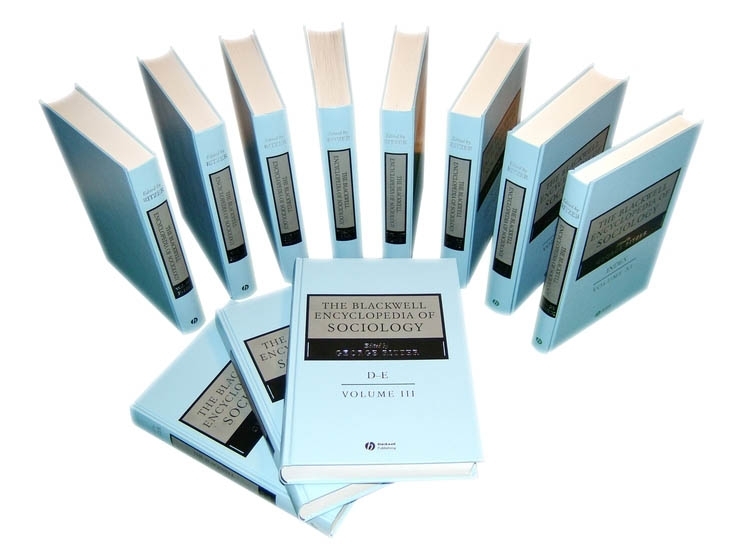Consumer Culture, Children's
First published: 22 September 2017
Abstract
Children's consumer culture refers to the institutional, material, and symbolic arrangements which organize a young person's involvement in, and movement through, the early life course in terms of commercial interests and values. Children are both subject to and arise as subjects in consumer contexts. The meanings which adhere to commercial goods are at once imposed on children, childhood, and children's social worlds and are taken up by children as resources with which they create selves, identities, and relationships.
References
- Buckingham, D. (2011) The Material Child, Polity, Cambridge.
- Camfield, L. and Tafere, Y. (2009) “ Children with a good life have to have school bags”: diverse understandings of well-being among older children in three Ethiopian communities. Working Paper no. 37, Young Lives, Oxford.
- Chin, E. (2001) Purchasing Power, University of Minnesota Press, Minneapolis, MN.
- Cook, D.T. (2000) The other “child study”: figuring children as consumers in market research, 1910s–1990s. Sociological Quarterly, 41 (3), 487–507.
- Cook, D.T. (2004) The Commodification of Childhood, Duke University Press, Durham, NC.
10.1215/9780822385431 Google Scholar
- Cross, G. (1997) Kids' Stuff, Harvard University Press, Cambridge, MA.
- Cross, G. (2000) An All-Consuming Century, Columbia University Press, New York.
- Diversi, M. (2006) Street kids in Nikes: in search of humanization through the culture of consumption. Cultural Studies – Critical Methodologies, 6 (3), 370–390.
10.1177/1532708605285623 Google Scholar
- Dyson, A.H. (1997) Writing Superheroes, Teachers College Press, New York.
- Engelhardt, T. (1986) The Shortcake Strategy, in Watching Television (ed. T. Gitlin), Pantheon, New York, pp. 68–110.
- Guber, S.S. and Berry, J. (1993) Marketing To and Through Kids, McGraw-Hill, New York.
- Higonnet, A. (1998) Pictures of Innocence, Thames & Hudson, New York.
- Kline, S. (1993) Out of the Garden, Verso, London.
- Langer, B. (2002) Commodified enchantment: children and consumer capitalism. Thesis Eleven, 69, 67–81.
10.1177/0725513602069001005 Google Scholar
- Leach, W. (1993) Land of Desire, Pantheon, New York.
- Marsh, J. (2000) Teletubby tales: popular culture in the early years language and literacy curriculum. Contemporary Issues in Early Childhood, 1 (2), 119–133.
10.2304/ciec.2000.1.2.2 Google Scholar
- McNeal, J.U. (1992) Kids as Consumers, Lexington Books, New York.
- McNeal, J.U. (1999) The Kids' Market: Myths and Realities, Paramount Market, Ithaca, NY.
- Nieuwenhuys, O. (2011) Can the teddy bear speak? Childhood, 18 (4), 411–418.
- Nissenbaum, S. (1997) The Battle for Christmas, Penguin, New York.
- Pleck, E. (2000) Celebrating the Family: Ethnicity, Consumer Culture, and Family Rituals, Harvard University Press, Cambridge, MA.
- Power, E. (2005) The unfreedom of being other: Canadian lone mothers' experiences of poverty and “life on the cheque.” Sociology, 39, 643–660.
- Pugh, A. (2009) Longing and belonging. Consumer Culture, 4 (2), 220–249.
- Ritzer, G. and Jurgenson, N. (2010) Production, consumption, prosumption: the nature of capitalism in the age of the digital “prosumer.” Journal of Consumer Culture, 10 (1), 13–36.
- Ruckenstein, M. (2011) Children in creationist capitalism. Information, Communication & Society, 14 (7), 1060–1076.
- Schor, J. (1998) The Overspent American, Harper, New York.
- Sonnad, N. (2014) Frozen is Disney's latest baby-naming blockbuster. Available at http://qz.com/226975/elsa-frozen-disney-latest-baby-naming-blockbuster/ (accessed July 29, 2014).
- A. Sparrman, B. Sandin, and J. Sjöberg (eds) (2012) Situated Consumption: A Critical Approach to Childhood Consumption in the 21st Century, Nordic Academic Press, Lund.
- Willett, R. (2008) Consumer citizens online: structure, agency, and gender in online participation, in Youth, Identity, and Digital Media (ed. D. Buckingham), MIT Press, Cambridge, MA, pp. 49–70.
- Wohlwend, K.E. (2011) Playing Their Way into Literacies: Reading, Writing, and Belonging in the Early Childhood Classroom, Teachers College Press, New York.
- Zelizer, V. (1985) Pricing the Priceless Child, Princeton University Press, Princeton, NJ.
Further Readings
- Cook, D.T. (2008) The missing child in consumption theory. Journal of Consumer Culture, 8 (2), 219–243.
- Milner, M., Jr. (2004) Freaks, Geeks and Cool Kids: American Teenagers, Schools, and the Culture of Consumption, Routledge, New York.
- Peterson, M. (2005) The jinn and the computer: consumption and identity in Arabic children's magazines. Childhood, 12 (2), 177–200.
- Schor, J. (2004) Born to Buy, Scribner's, New York.
- Seiter, E. (1993) Sold Separately: Parents and Children in Consumer Culture, Rutgers University Press, New Brunswick, NJ.



